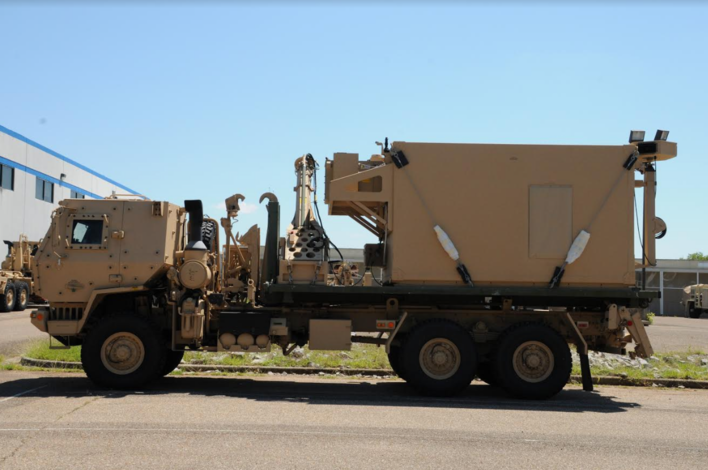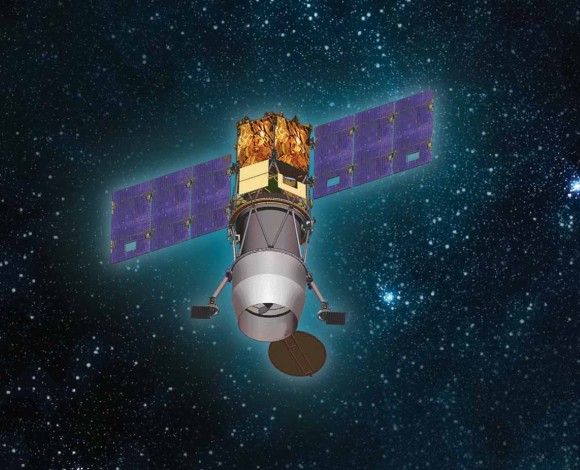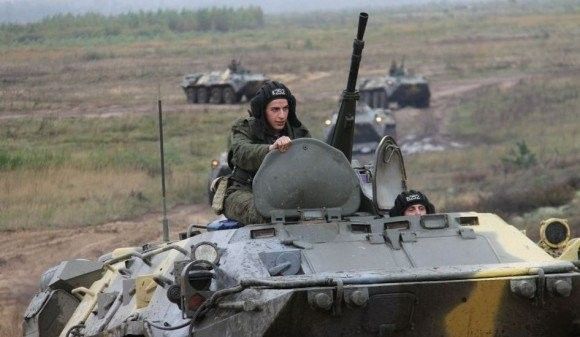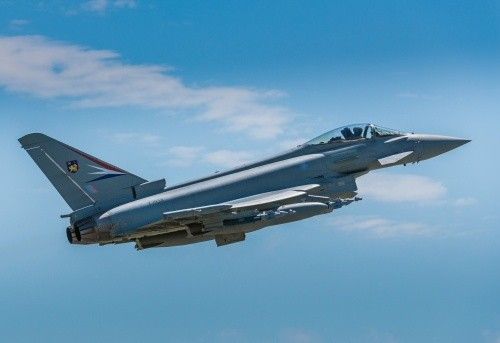IBCS May Integrate the Polish Air and Missile Defence System [INTERVIEW]
- In order to create a multi-layered air defence suite, it is enough to add in the required components, securing the lowest layer. The principle of operation is unified - as Tarik M. Reyes, Vice President, Missile Defence & Protective Systems division, Northrop Grumman has stated in an interview with Defence24.pl.
Maksymilian Dura: Poland, at the moment, is planning to acquire two discriminate anti-aircraft systems: Wisła and Narew. In what way would the IBCS allow for interconnecting these two elements? Will it make it possible to create a single defensive system out of the two?
Tarik M. Reyes, Vice President, Missile Defence & Protective Systems division, Northrop Grumman: Indeed it will. In the past, we in the US acquired closed systems that did not talk to one another. One sensor, one launcher, one command and control station. This may be exemplified by the current Patriot system configuration.
According to the US Army, introduction of the IBCS system would mean that a change would occur, with regards to the operation of the air defence systems.
IBCS changes the paradigm according to which air defence systems are created in a hierarchical structure, around the specific systems. We can act against targets at short and medium ranges, in a strategic scheme. The idea is to maximise the range of the specific weapons we have, taking advantage of information gathered throughout the whole battlefield. The recognised air picture created by IBCS and distributed across the battlefield also includes the capabilities of sensors and effectors not organic to the C2 suite. Our command and control system creates a shared situational awareness, allowing the user to decide on the optimal effector for acting against the specific threat.
Such a joint command and control system gathers and analyses all of the data, enabling the operators to make optimal decisions. The soldiers have a picture of the aerial situation at their disposal, provided by all of the sensors available. Earlier on, we had no such capacity at hand. And again, let us use the current Patriot system as an example. This system may only see what the sensor of the Patriot system sees, and may only use effectors specifically dedicated to a sensor.
IBCS acts in an optimal manner, making use of all of the elements connected to the network. The number of those elements may vary, since adding them in is fairly simple, following a “Plug and Fight” principle. If a sensor with a defined specification remains available, then the command system may also make use of the provided information.

According to the respective manufacturers, more and more contemporary air defence systems are based on open architecture. What is the distinguishing factor for the IBCS command and control system?
When people use the term “open architecture” or “modular systems open architecture” one must know enough to ask “what do you really mean by that?”. Where, and at what level a system is “open” can vary widely. Numerous manufacturers declare that their systems are open, however it is difficult to integrate elements provided by other suppliers within them, for example. Our concept is that the “open” profile is implemented at significantly low levels within the system governed by a common connectivity standard. Then, without any problem, you may connect any sensor or launcher. This would be very difficult in case of most air defence legacy systems.
I would like to stress the fact that the first firing with the IBCS system was conducted in line with the exact same principle of operation as the one that is used in Patriot. By using our command and control systems we have used the data provided by the Patriot system sensor, controlling the launching of the PAC-2 missiles of the Patriot system. The real benefit was demonstrated in the programme’s second successful flight test where a non-Patriot sensor provided the only data used to acquire the threat and guide a Patriot PAC3 missile to a successful intercept.
The common communication standard has been developed by Northrop Grumman?
Northrop Grumman in partnership with the United States Government performed the engineering and design for how all the parts of the system communicate. However, we used a readily available open standard and did not create a new standard on our own. Without going into details, we have used a solution similar to the LINUX OS. Each and every party has access to what we have used, and everything is contained within the US standards, whereas IBCS is owned by the US Government.
What limitations are tied to usage of such an open system?
The limitations are not resulting from the technology itself, but in some sense they are a result of an ability of connecting everything that remains available. Some of the experts do not believe that the ability to include any sensor or launcher within the IBCS network remains secure. However, this is not true, as the system is being continuously enhanced, under close supervision of the US Government. The difference on IBCS is that we are designing the necessary security protection and protocols into the system from the beginning, not as add on like so many others in our industry are trying to do now.
Is there a need to change the attitude towards creation of the anti-aircraft systems?
Yes. Above all, within two domains - security and data credibility. If we interconnect a variety of sensors, some of the information would need to be rejected, toward ensuring the accuracy and clarity of the network’s common operating picture. However, conscious resignation from some of the information delivered does not mean that the system is wrong. This is similar to the cyber-security networking standards. This is the critical component that is being strongly emphasised now, by the US government.
Was Poland offered to include both medium, as well as short range system components, within the elements that would be connected to the IBCS network?
We have been demonstrating to the Poland Ministry of National Defence that the capability resides with IBCS to integrate medium and short range Air Defence system as envisioned by the WISŁA and NAREW programmes. The US Army is driving towards consolidation of all of the command and control systems of a variety of elements within IBCS. The US Army’s Integrated Air and Missile Defense modernization strategy is to connect all of the C2 systems to a single, shared command and control system that may be used for training purposes or to create common battlefield situational awareness.
Indeed, we have already demonstrated the ability to connect Short Range Air Defense (SHORAD) systems to the IBCS network: sensors and effectors; and the ability to connect them with the medium range system. If we have three different, separate and discriminate SAM systems, short, medium and long range, it remains highly difficult to properly and optimally assign targets to the corresponding fire units. Meanwhile, using those assets separately remains costly and ineffective.
For the soldiers, it remains highly important to have a single command and control system at their disposal, within which a unified situational awareness for the whole battlefield is created. Only in such context, coordination of the operational activities may be achieved. The individual elements of the defensive systems should not be mutually interrupting their own operation, they should cooperate through optimal use of the existing battle assets. This is achievable when using a single command and control system, such as IBCS.
Can different branches of the Armed Forces operate together within the framework of IBCS: Land Forces, the Air Force, and the Navy?
The US Army Air Defense has had to work very closely with all other services (U.S. Navy, Marine Corps, and Air Force) and coalition partners. Because of that imperative, IBCS can communicate and share data across many joint interfaces creating a much more robust understanding of the entire operational environment.
The US Navy is creating other systems for designating the targets beyond the horizon – NIFC-CA.
Yes, this is true. Efforts are in progress, on US Navy IADS. However, no requirement exists at the moment to integrate those systems, even though this is possible and would remain beneficial, considering the defensive capabilities.
Is it the only assumption to share the situational awareness data, or would this be used also for target distribution purposes, with regards to the weapons?
All our services, within the US, share air picture data via LINK 16 as does NATO. Both the US Army and the US Navy are getting to the point where we can do more than LINK 16 currently allows. In the future concepts like joint integrated fire control are what IBCS is poised to support.
After introduction, in Poland, of the Wisła medium range system with IBCS, will there be an option of acquiring solely the SHORAD launchers and radars, instead of obtaining a separate Narew solution, and fusing them with the use of the IBCS system?
Yes, this is in discussion and under consideration by the Governments of Poland and the United States. As I have discussed, the IBCS Modular and Open Systems Approach architecture enables for the connection of any effector (guns, missiles, etc) and sensors. In order to create a multi-layered air defence suite, it is enough to add in the required components, securing the lowest layer. The principle of operation is unified. This is the way of thinking we have adopted in the US. The fact that we are initially incorporating US sensors and effectors within the system does not mean that the country developed solutions cannot be integrated with IBCS. This is achievable for Poland, but it is up to the Polish Government to make this decision.
Thank you for the conversation.





WIDEO: Defence24 Days 2025: Premier Defence & Security Conference in CEE